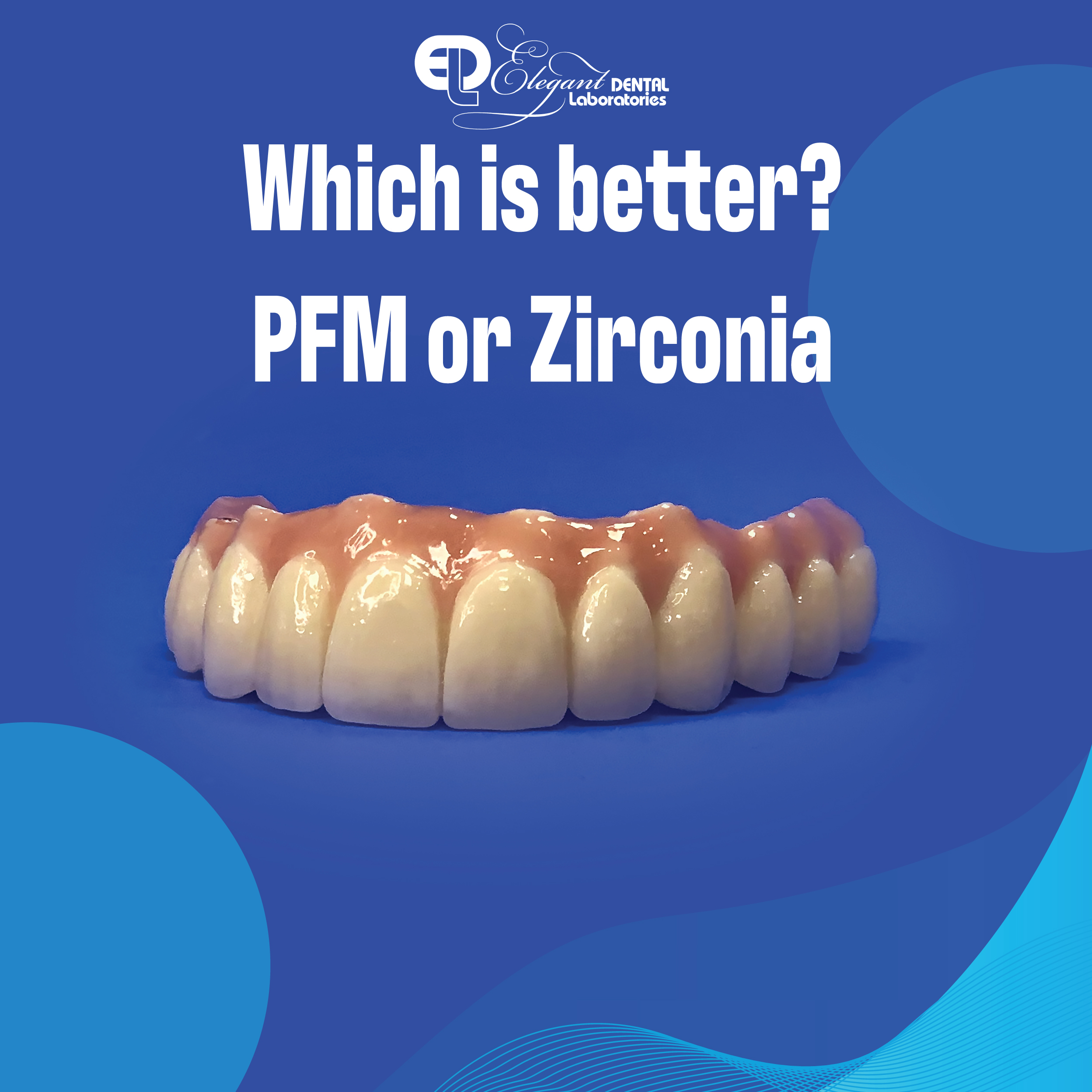Which is better? PFM or Zirconia!

Hey guys ever wondered what the difference between PFM vs. Zirconia? Porcelain-fused-to-metal crowns (PFMs) have been successfully used for many years, providing clinicians with reliable, esthetically pleasing, and long-lasting restorations. However, over the past few years, an increasing number of clinicians are choosing zirconia restorations. The number of PFM crowns requested by clinicians is lower compared with all-ceramic and zirconia restorations. Some dentists use zirconia or all-ceramic restorations almost exclusively, particularly when restoring only a single unit. The switch from one material to another has been relatively quick, so there is little long-term research into the reliability of zirconia restorations. By comparison, PFMs have been used successfully for over 60 years, and their durability has been extensively evaluated.
Materials Used to Manufacture PFM Crowns
Generally, there are three different categories of dental alloys used when fabricating PFM crowns: non-precious, semi-precious, and high noble. Non-precious alloys are sometimes called base metals with a noble metal content of less than 25%. These metals often contain large percentages of cobalt, nickel, chromium, or beryllium. Semi-precious alloys have at least 25% noble metal content. Precious metal alloys have over 60% noble metal content which includes gold, platinum, or palladium. A precious metal alloy contains 40% gold. Metal substructures are layered with feldspathic porcelain.Materials Used to Manufacture Zirconia Crowns
Options for zirconia crowns include Zirconia Solid, Zirconia HT (High Translucent), and Zirconia Layered. Zirconia Solid is monolithic and is the strongest material available. It’s particularly good for patients with clenching or grinding problems and is most suitable for posterior crowns and bridges. Zirconia HT is made from a stronger material than that of PFM restorations but still has a natural translucency and excellent esthetics. It’s perfect for anterior crowns and for bridges up to 3 units. Zirconia Layered is another extremely strong material suitable for bridges and crowns. It’s substructure is zirconia with porcelain layered over it and is similar to PFM.Why Choose PFMs?
The reliability of PFM restorations is well documented, and millions of restorations have been placed worldwide. PFMs are known to last for 30 years when utilized in the correct situations and with good patient hygiene. Characteristics of PFM restorations:- PFMs are strong and are suitable for use in all areas of the mouth and in most clinical situations
- Clinical success of PFM restorations has been proven through long-term research
- Clinical research has shown that single PFM crowns will last for many years, and three-unit PFM bridges also have a relatively long lifespan
- PFM crowns and bridges provide relatively good esthetics, especially during the first few years
- Precision attachments can be used with PFMs, while zirconia restorations have not yet achieved this ability
- PFM restorations can be used for long-span bridges and have proven to be an effective material choice in the longer term
Why Choose Zirconia Restorations?
Zirconia restorations offer clinicians several advantages, and the introduction of newer and more esthetically pleasing zirconia materials has greatly increased their appeal. More clinicians are choosing to scan tooth preparations rather than taking conventional tray impressions. Dental laboratories utilize the scans to create precision-made restorations relatively easily. Characteristics of zirconia restorations:- The material provides high-strength
- The high biocompatibility of zirconia will not cause allergies in patients who have allergic reactions to PFM restorations
- They have good soft tissue response is useful for patients suffering from soft tissue irritation caused by PFM or metal restorations
- Restorations are precision-fitted, so margins are extremely accurate
- They are ideal for full crown restorations where cosmetics are important and additional strength and durability are required
- They are resistant to hot and cold, which reduces hypersensitivity
- Less tooth preparation is required
- Solid zirconia is suitable for bruxers due to its durability
- They can mask underlying tooth discoloration, implant abutments, and metal cores
- Gum recession will not affect the esthetics, and marginal discoloration will be avoided





